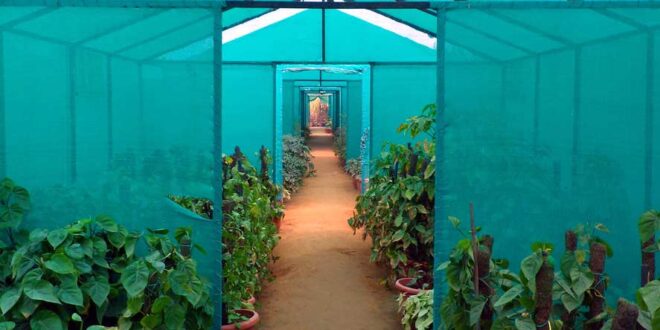As gardeners and greenhouse owners constantly seek new ways to optimize their plant growth and maintain a healthy environment for their plants, shade nets have become an indispensable tool. They not only protect plants from harsh sunlight and extreme temperatures but they can also be used in various innovative ways to enhance your gardening or greenhouse experience. In this 2024 guide, we will explore innovative ways to use shade nets in your garden or greenhouse.
1. Vertical Gardening
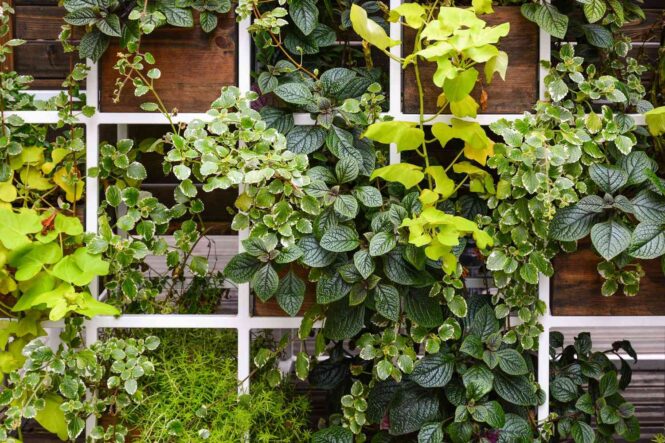
One of the most creative ways to use shade nets is to turn them into vertical gardens. By attaching the mesh to a wall or fence, you can create a green curtain that offers shade, privacy, and an aesthetically pleasing environment. Simply weave the plants through the mesh, allowing them to grow and expand on the net from sjzqibang. This method is ideal for small spaces, balconies, or urban gardens.
2. Pest Control
Shade nets can also be used as a barrier against pests. By covering your plants with a net, you prevent insects, birds, and rodents from accessing your garden or greenhouse. Choose a net with a fine mesh that will prevent even the smallest pests from entering while still allowing for adequate air circulation.
3. Windbreaks and Microclimates
By strategically placing a web around your garden or greenhouse, you can create windbreaks and microclimates. This can be especially useful in areas prone to strong winds, extreme temperatures, or excessive sun exposure. A shade net windbreak will help to protect delicate plants from damage and can create pockets of cooler or warmer air, depending on your needs.
4. Rainwater Harvesting
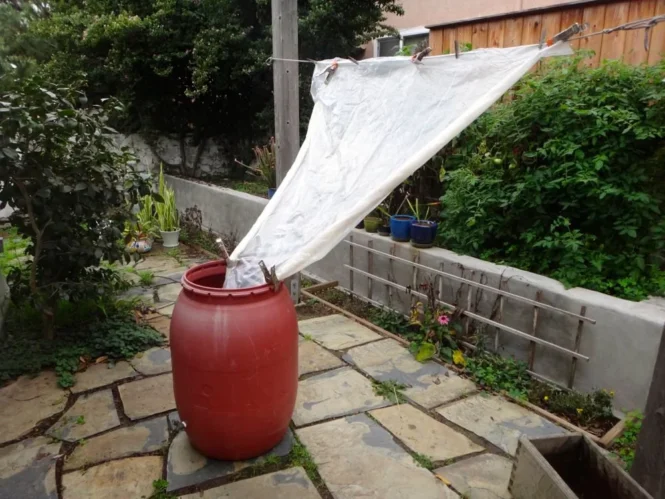
Shade nets can also be used to collect rainwater for irrigation purposes. Attach the net mesh to a frame, angling it slightly so that the rainwater runs off into a gutter or water storage container. This is an eco-friendly and cost-effective way to provide water for your plants, especially during periods of drought.
5. Reducing Soil Erosion
In areas prone to soil erosion, shade nets can be used to help stabilize the soil and prevent the loss of valuable topsoil. Placing the nets on the ground and anchoring them with pegs or weights will help to keep the soil in place, even during heavy rains or strong winds.
6. Temperature and Humidity Control
Shade nets can be used to regulate temperature and humidity levels within your garden or greenhouse. By covering your plants with a net, you can protect them from excessive heat and help maintain a more consistent temperature. Additionally, shade nets can help to retain moisture in the soil, reducing the need for frequent watering and increasing the humidity levels in your greenhouse.
7. Seedling Protection
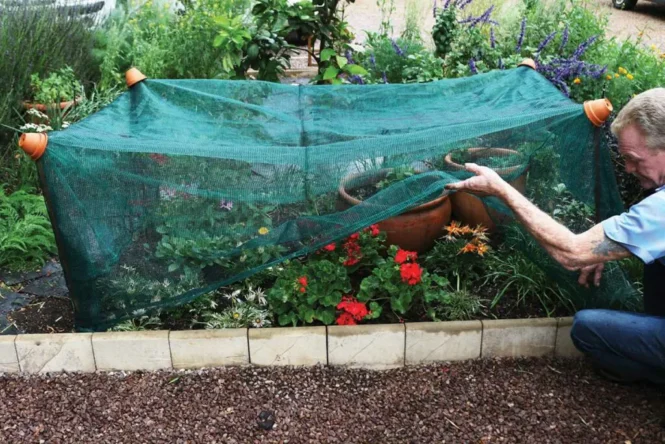
When starting plants from seeds, it’s important to provide a nurturing environment that encourages growth. Using shade nets to cover your seedlings can protect them from harsh sunlight, extreme temperatures, and pests. This creates a microclimate that promotes germination and early plant development, increasing the likelihood of success for your young plants.
8. Supporting Climbing Plants
Shade nets can be used to provide support for climbing plants, such as beans, peas, and cucumbers. By attaching the shade mesh to a sturdy frame, you create a trellis system that allows the plants to climb and thrive. This not only helps to maximize space in your garden or greenhouse but also encourages healthier growth and better fruit production.
9. Enhancing Plant Growth
Certain colored nets have been found to promote specific plant responses. For example, blue ones can encourage vegetative growth and branching, while red mesh can stimulate fruit production and flowering. By choosing the appropriate colored net for your specific plants, you can enhance their growth and overall health.
10. Creating Outdoor Living Spaces
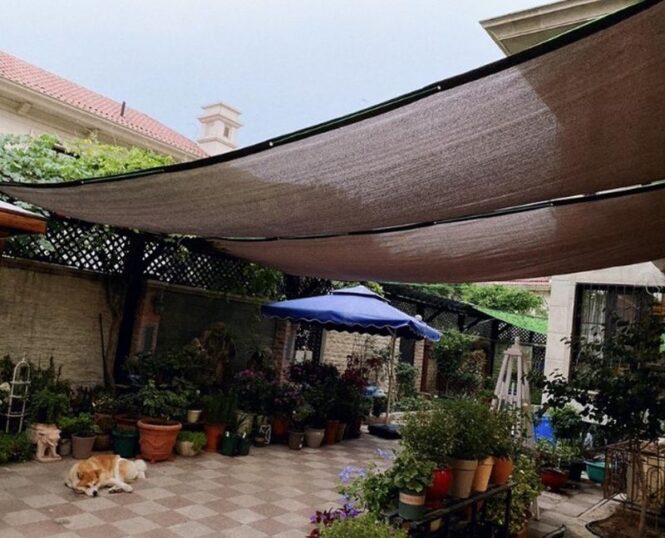
Shade nets can also be used to create comfortable and stylish outdoor living spaces. By hanging nets over patios, decks, or seating areas, you can provide shade and privacy while still allowing for natural light and air circulation. This creates a cozy environment perfect for relaxing, entertaining, or dining outdoors.
How to Choose the One?
Selecting the right model for your garden or greenhouse can significantly impact your plants’ growth, health, and productivity. It’s essential to consider factors such as shading percentage, material, color, and durability when making your decision. Here are some guidelines to help you choose the right shade net model for your specific needs.
Shading Percentage
Shade webs come in various shading percentages, typically ranging from 30% to 90%. The percentage indicates the amount of sunlight the net will block. Consider the specific needs of your plants and the climate in your area when selecting a shading percentage. For example, plants that require partial shade may benefit from a 50% shade net, while more delicate plants or those in hotter climates may require 70% or higher.
Material
They are available in different materials, including polyethylene, polyester, and aluminum. Polyethylene is lightweight, durable, and cost-effective, making it the most common choice for gardeners and greenhouse owners. Polyester types offer increased strength and UV resistance, while aluminum meshes are known for their reflective properties and heat reduction capabilities. Consider your budget, durability needs, and specific environmental factors when choosing a material.
Size and Customization
Measure the area you want to cover with a shade net and choose a model that will adequately protect your plants. Many manufacturers offer custom sizes and shapes to fit your specific requirements. If you need a unique shape or size, reach out to a supplier to discuss your options.
Durability and UV Resistance
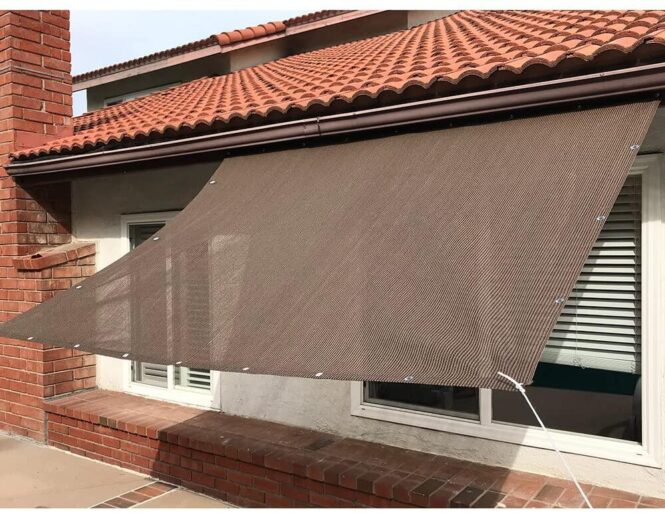
Look for models with reinforced edges and UV-resistant materials to ensure they can withstand the elements and provide long-lasting protection for your plants. High-quality shade nets will not only protect your plants from harsh sunlight but also resist tearing, fraying, and UV degradation over time.
Conclusion
In conclusion, shade nets offer a versatile and innovative solution for various gardening and greenhouse challenges. From vertical gardening to pest control, temperature regulation to rainwater harvesting, shade nets can be utilized in numerous creative ways to improve your garden or greenhouse. By experimenting with these innovative methods, you can enhance your plants’ growth, protect them from harsh conditions, and create a more enjoyable and functional outdoor space.
 Imagup General Magazine 2024
Imagup General Magazine 2024
